Alternative Sources of Energy Distributed Generation economics,


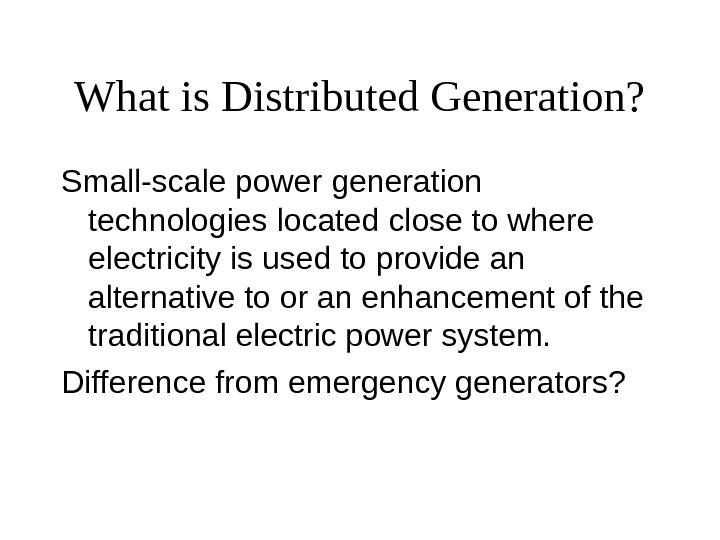
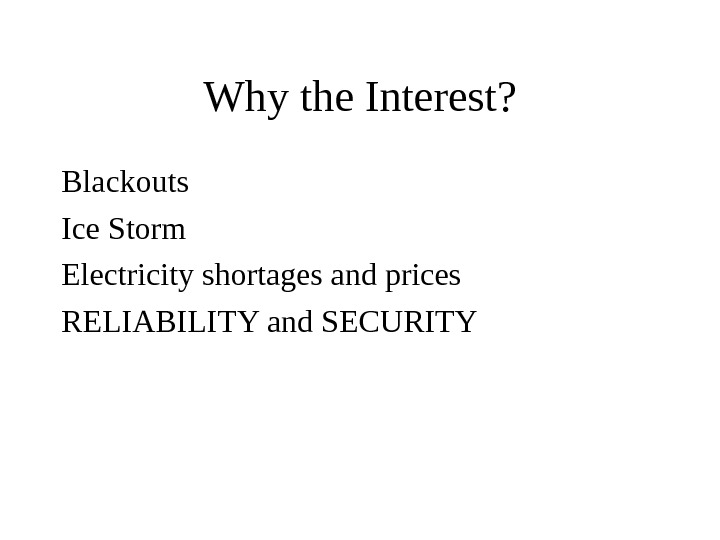

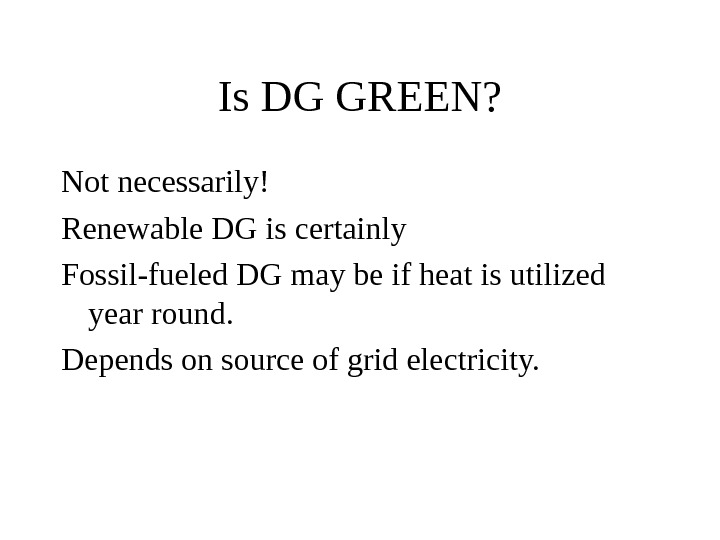


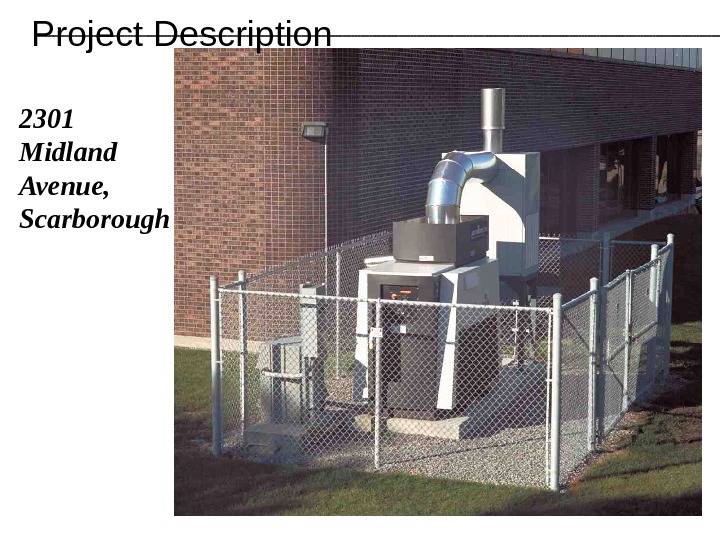
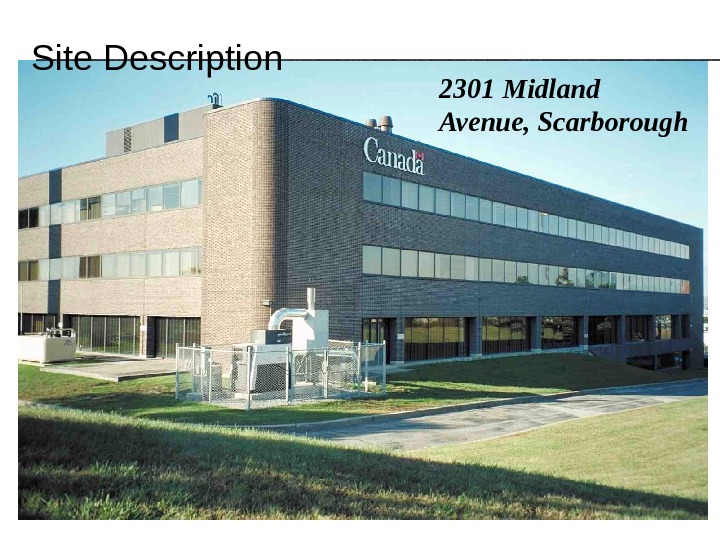


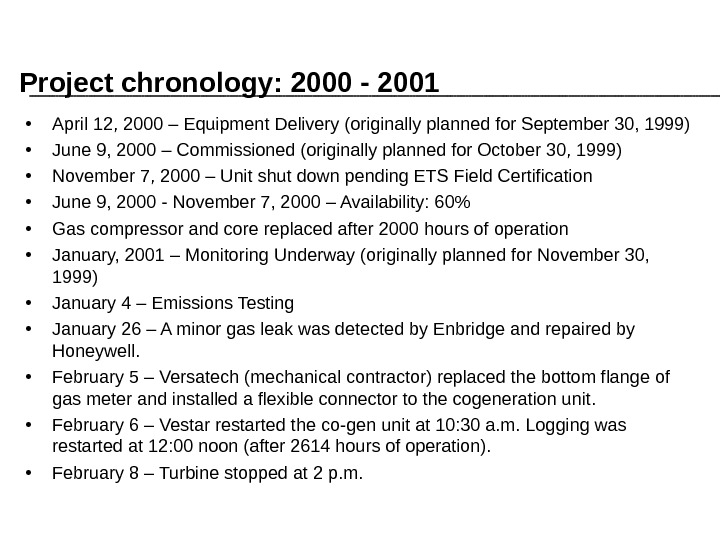


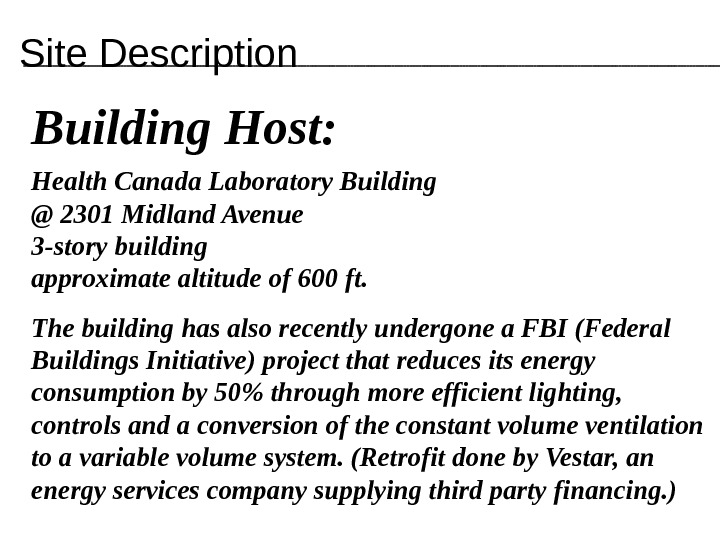

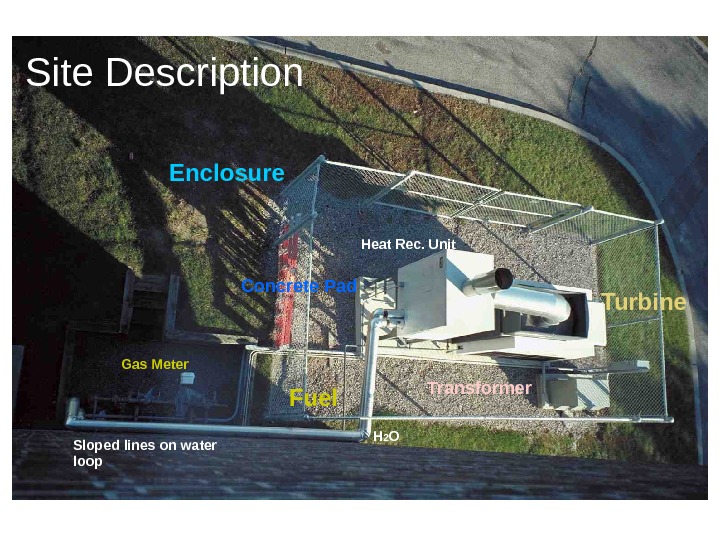
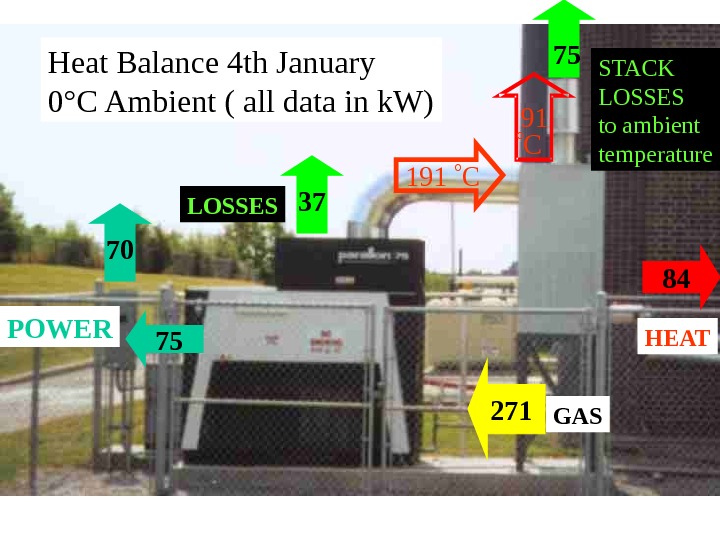
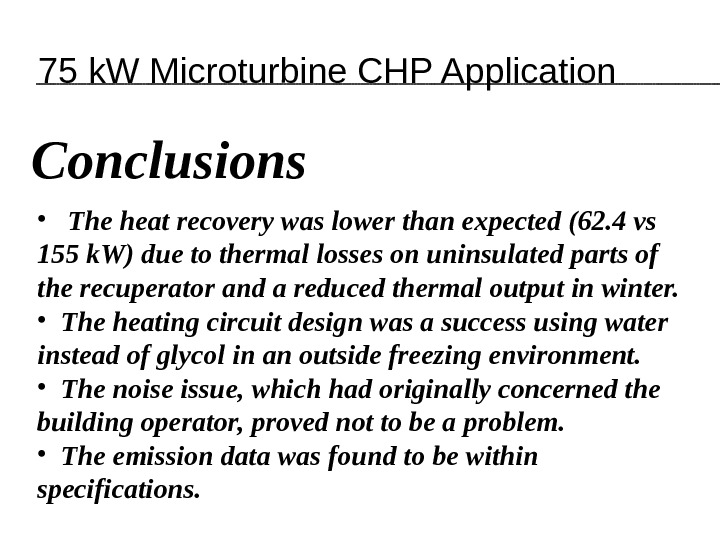
alternative_sources_of_energy_1.ppt
- Размер: 14.7 Mегабайта
- Количество слайдов: 19
Описание презентации Alternative Sources of Energy Distributed Generation economics, по слайдам
 Alternative Sources of Energy Distributed Generation economics, variability factors, capacity contributions, and environmental considerations related to utility integration issues. turbines, cogeneration, solar, distributed generation and wind.
Alternative Sources of Energy Distributed Generation economics, variability factors, capacity contributions, and environmental considerations related to utility integration issues. turbines, cogeneration, solar, distributed generation and wind.
 What is Distributed Generation? Small-scale power generation technologies located close to where electricity is used to provide an alternative to or an enhancement of the traditional electric power system. Difference from emergency generators?
What is Distributed Generation? Small-scale power generation technologies located close to where electricity is used to provide an alternative to or an enhancement of the traditional electric power system. Difference from emergency generators?
 Why the Interest? Blackouts Ice Storm Electricity shortages and prices RELIABILITY and SECURITY
Why the Interest? Blackouts Ice Storm Electricity shortages and prices RELIABILITY and SECURITY
 Economics? • Depends on the relative price of fuel in to electricity out (spark gap) • Electricity may be a variable price • Depends on the proponent (fuel cells in Berlin)
Economics? • Depends on the relative price of fuel in to electricity out (spark gap) • Electricity may be a variable price • Depends on the proponent (fuel cells in Berlin)
 Is DG GREEN? Not necessarily! Renewable DG is certainly Fossil-fueled DG may be if heat is utilized year round. Depends on source of grid electricity.
Is DG GREEN? Not necessarily! Renewable DG is certainly Fossil-fueled DG may be if heat is utilized year round. Depends on source of grid electricity.
 Multiple Sites Responding • Response to price, shortage, etc • Communication by internet or electrical • Use of existing stand by generators
Multiple Sites Responding • Response to price, shortage, etc • Communication by internet or electrical • Use of existing stand by generators
 2301 Midland Avenue, Scarborough has the first Canadian installation of a micro-turbine supplying electricity and waste heat to a building. The gas-fired unit was intended to operate continuously, providing 75 k. W electric and 155 k. W thermal heat. Natural gas consumption by the building’s boilers has been reduced by the application of recovered heat to space heating systems in winter and humidity control systems in summer. Project Description 75 k. W Microturbine CHP Application
2301 Midland Avenue, Scarborough has the first Canadian installation of a micro-turbine supplying electricity and waste heat to a building. The gas-fired unit was intended to operate continuously, providing 75 k. W electric and 155 k. W thermal heat. Natural gas consumption by the building’s boilers has been reduced by the application of recovered heat to space heating systems in winter and humidity control systems in summer. Project Description 75 k. W Microturbine CHP Application
 2301 Midland Avenue, Scarborough Project Description
2301 Midland Avenue, Scarborough Project Description
 2301 Midland Avenue, Scarborough. Site Description
2301 Midland Avenue, Scarborough. Site Description
 Site Description Enclosure Concrete Pad Fuel Transformer. Heat Rec. Unit Turbine H 2 OGas Meter Sloped lines on water loop
Site Description Enclosure Concrete Pad Fuel Transformer. Heat Rec. Unit Turbine H 2 OGas Meter Sloped lines on water loop
 Net Present Value of Microturbine Savings (Office Building) ($600, 000) ($500, 000) ($400, 000) ($300, 000) ($200, 000) ($100, 000) $0 $100, 000 $200, 000 $300, 000 $400, 000 $500, 000 $600, 000 $700, 000 $800, 000 $900, 000 15171921232527293133353739414345 Average Natural Gas Cost (¢/m 3 ) 456789101112 Average Natural Gas Cost ($/GJ) 15 cents/k. Wh 14 cents/k. Wh 13 cents/k. Wh 12 cents/k. Wh 11 cents/k. Wh 10 cents/k. Wh 9 cents/k. Wh 8 cents/k. Wh 7 cents/k. Wh 6 cents/k. Wh 5 cents/k. Wh 4 cents/k. Wh 3 cents/k. Wh Generation Efficiency: 30% Location: Ottawa Discount Rate: 7%Reasons for doing the project Source: PWGSC study All values in Canadian Funds
Net Present Value of Microturbine Savings (Office Building) ($600, 000) ($500, 000) ($400, 000) ($300, 000) ($200, 000) ($100, 000) $0 $100, 000 $200, 000 $300, 000 $400, 000 $500, 000 $600, 000 $700, 000 $800, 000 $900, 000 15171921232527293133353739414345 Average Natural Gas Cost (¢/m 3 ) 456789101112 Average Natural Gas Cost ($/GJ) 15 cents/k. Wh 14 cents/k. Wh 13 cents/k. Wh 12 cents/k. Wh 11 cents/k. Wh 10 cents/k. Wh 9 cents/k. Wh 8 cents/k. Wh 7 cents/k. Wh 6 cents/k. Wh 5 cents/k. Wh 4 cents/k. Wh 3 cents/k. Wh Generation Efficiency: 30% Location: Ottawa Discount Rate: 7%Reasons for doing the project Source: PWGSC study All values in Canadian Funds
 • April 12, 2000 – Equipment Delivery (originally planned for September 30, 1999) • June 9, 2000 – Commissioned (originally planned for October 30, 1999) • November 7, 2000 – Unit shut down pending ETS Field Certification • June 9, 2000 — November 7, 2000 – Availability: 60% • Gas compressor and core replaced after 2000 hours of operation • January, 2001 – Monitoring Underway (originally planned for November 30, 1999) • January 4 – Emissions Testing • January 26 – A minor gas leak was detected by Enbridge and repaired by Honeywell. • February 5 – Versatech (mechanical contractor) replaced the bottom flange of gas meter and installed a flexible connector to the cogeneration unit. • February 6 – Vestar restarted the co-gen unit at 10: 30 a. m. Logging was restarted at 12: 00 noon (after 2614 hours of operation). • February 8 – Turbine stopped at 2 p. m. Project chronology: 2000 —
• April 12, 2000 – Equipment Delivery (originally planned for September 30, 1999) • June 9, 2000 – Commissioned (originally planned for October 30, 1999) • November 7, 2000 – Unit shut down pending ETS Field Certification • June 9, 2000 — November 7, 2000 – Availability: 60% • Gas compressor and core replaced after 2000 hours of operation • January, 2001 – Monitoring Underway (originally planned for November 30, 1999) • January 4 – Emissions Testing • January 26 – A minor gas leak was detected by Enbridge and repaired by Honeywell. • February 5 – Versatech (mechanical contractor) replaced the bottom flange of gas meter and installed a flexible connector to the cogeneration unit. • February 6 – Vestar restarted the co-gen unit at 10: 30 a. m. Logging was restarted at 12: 00 noon (after 2614 hours of operation). • February 8 – Turbine stopped at 2 p. m. Project chronology: 2000 —
 75 271 84 GAS HEAT 37 POWER 191 C LOSSES STACK LOSSES to ambient temperature. Heat Balance 4 th January 0°C Ambient ( all data in k. W)
75 271 84 GAS HEAT 37 POWER 191 C LOSSES STACK LOSSES to ambient temperature. Heat Balance 4 th January 0°C Ambient ( all data in k. W)
 Emission Testing January 4 th
Emission Testing January 4 th
 Site Description Building Host: Health Canada Laboratory Building @ 2301 Midland Avenue 3 -story building approximate altitude of 600 ft. The building has also recently undergone a FBI (Federal Buildings Initiative) project that reduces its energy consumption by 50% through more efficient lighting, controls and a conversion of the constant volume ventilation to a variable volume system. (Retrofit done by Vestar, an energy services company supplying third party financing. )
Site Description Building Host: Health Canada Laboratory Building @ 2301 Midland Avenue 3 -story building approximate altitude of 600 ft. The building has also recently undergone a FBI (Federal Buildings Initiative) project that reduces its energy consumption by 50% through more efficient lighting, controls and a conversion of the constant volume ventilation to a variable volume system. (Retrofit done by Vestar, an energy services company supplying third party financing. )
 Reasons for doing the project Benefits of CHP (Combined Heat and Power) microturbines: — Reduction of greenhouse gas production — Potential energy cost savings — Versatility and stand-alone capability — Possibility of selling power back to grid 75 k. W Microturbine CHP Application
Reasons for doing the project Benefits of CHP (Combined Heat and Power) microturbines: — Reduction of greenhouse gas production — Potential energy cost savings — Versatility and stand-alone capability — Possibility of selling power back to grid 75 k. W Microturbine CHP Application
 Site Description Enclosure Concrete Pad Fuel Transformer. Heat Rec. Unit Turbine H 2 OGas Meter Sloped lines on water loop
Site Description Enclosure Concrete Pad Fuel Transformer. Heat Rec. Unit Turbine H 2 OGas Meter Sloped lines on water loop
 75 271 84 GAS HEAT 37 POWER 191 C LOSSES STACK LOSSES to ambient temperature. Heat Balance 4 th January 0°C Ambient ( all data in k. W)
75 271 84 GAS HEAT 37 POWER 191 C LOSSES STACK LOSSES to ambient temperature. Heat Balance 4 th January 0°C Ambient ( all data in k. W)
 • The heat recovery was lower than expected (62. 4 vs 155 k. W) due to thermal losses on uninsulated parts of the recuperator and a reduced thermal output in winter. • The heating circuit design was a success using water instead of glycol in an outside freezing environment. • The noise issue, which had originally concerned the building operator, proved not to be a problem. • The emission data was found to be within specifications. Conclusions 75 k. W Microturbine CHP Application
• The heat recovery was lower than expected (62. 4 vs 155 k. W) due to thermal losses on uninsulated parts of the recuperator and a reduced thermal output in winter. • The heating circuit design was a success using water instead of glycol in an outside freezing environment. • The noise issue, which had originally concerned the building operator, proved not to be a problem. • The emission data was found to be within specifications. Conclusions 75 k. W Microturbine CHP Application

